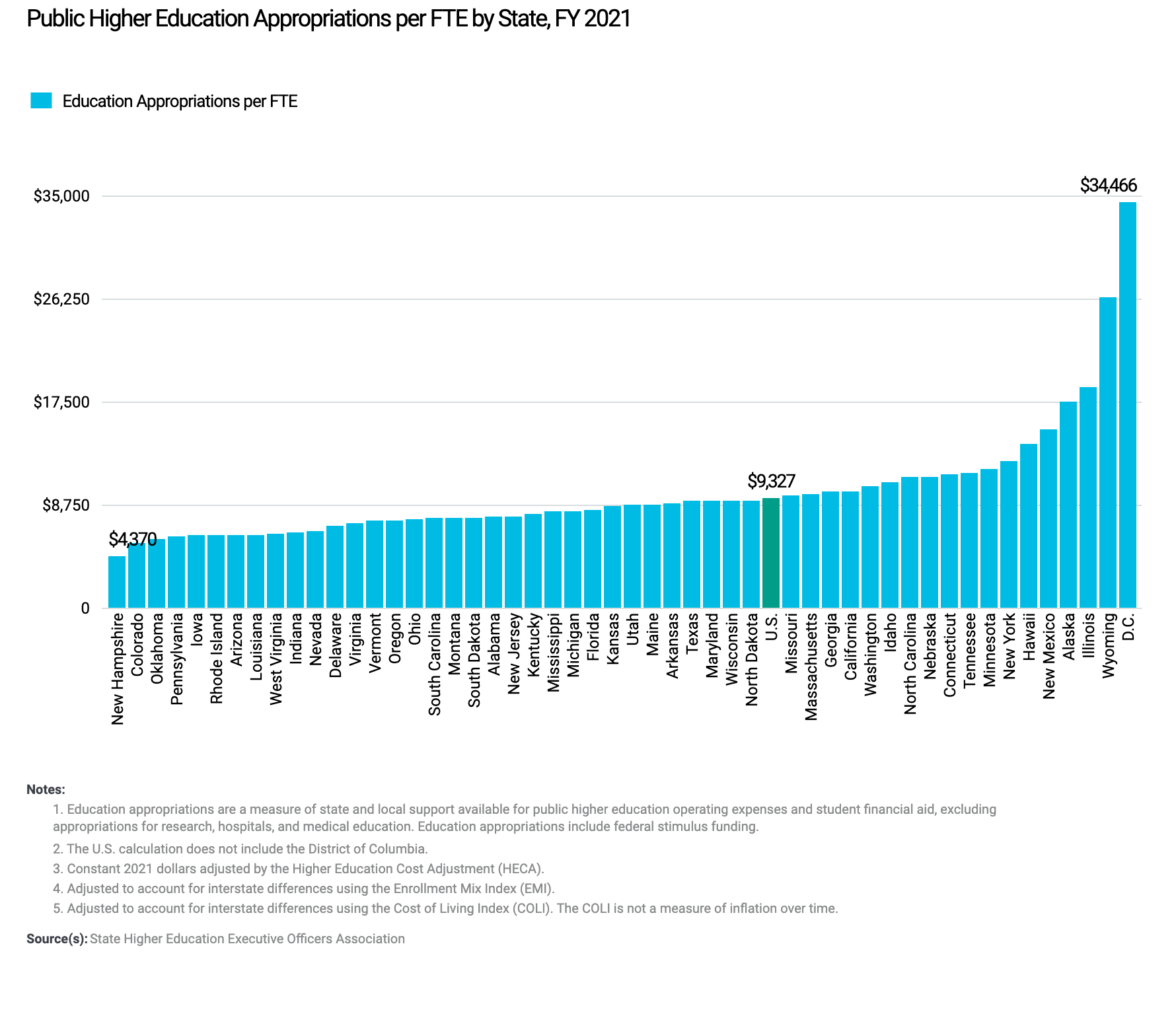Request Information
Ready to find out what MSU Denver can do for you? We’ve got you covered.
Jan. 9, 2023
Dear Members of the Joint Budget Committee,
We are incredibly grateful for the increased investments the State has made in higher education over the past several years. Because of this committee’s dedication to funding public postsecondary education above inflation since 2016, we have been able to make important progress toward Colorado’s strategic goals of 66% credential attainment and minimizing equity gaps to ensure all Coloradans have the certificates and degrees necessary to compete for the jobs of their dreams and to sustain the state’s growing economy.
Unfortunately, the current level of state higher education investment is inadequate to meet long-term statewide strategic goals. Despite an impressive increase from the State last year, Colorado is still approximately $900 million below the average funding of our national peers, and our state funding per student dropped from 45th to 49th in the country. Greater state investment in higher education has never been more important as we seek to meet critical state workforce shortages, while also keeping tuition in check and addressing inflationary pressures on our operations.

For FY2023-24, we seek an increase of $144.7 million in state operating funding and 4% in tuition authority to continue our vital impact on our students and the state.
Higher education is key to Coloradans’ prosperity, economic growth, and civil society. The 2022 Colorado Talent Pipeline Report showed that in our current economy, 91.4% of Tier 1 Top Jobs in our state require some type of postsecondary education past a high school diploma or equivalent. Beyond workforce readiness, higher education also plays an essential role in advancing social and economic integrity in society by building critical thinking and problem-solving skills in our students.
State funding ensures equitable access to affordable higher ed. More students than ever are the first in their families to attend college, which is a fact to be celebrated but also creates new pressures for services that support their success. These students, along with low-income students, rural students, and students of color face greater barriers to accessing and completing education. Additional advising, wrap-around services, financial aid, and mentoring have proven transformational in cultivating success for these students but also require more resources.
Compensation increases are required to keep pace with inflation and ensure equity. Increases in our cost of benefits, contracts and other foundational operating expenses mean that we need more financial resources to simply sustain the work we do in service to students. Employees at Colorado colleges and universities deserve compensation that is consistent with the market and accounts for inflation. Along with the State’s classified employees, our faculty and staff enable Colorado’s quality of life and should be paid fairly.
In the proposal that follows, you will see the details on this request that prioritizes both a continued investment in our shared policy priorities to address equity gaps in postsecondary attainment and resources required to sufficiently address the rising costs affecting our operations as well as our employees. This proposal also shows the direct relationship between state funding and tuition.
We look forward to sharing more details on the importance of the impact this proposal will have on our students, employees, and the state in our presentations to you next week. Thank you for your leadership; we are grateful to work alongside you in pursuit of a strong future for Colorado.
Sincerely,
David A. Tandberg, Interim President, Adams State University
Leah Bornstein, President, Aims Community College
Joe Garcia, Chancellor, Colorado Community College System
John Marshall, President, Colorado Mesa University
Carrie Besnette Hauser, President and CEO, Colorado Mountain College
Paul C. Johnson, President and Professor, Colorado School of Mines
Tony Frank, Chancellor, Colorado State University System
Tom Stritikus, President, Fort Lewis College
Randy Johnson, Executive Director, Emily Griffith Technical College
Janine Davidson, President, Metropolitan State University of Denver
Teina McConnell, Executive Director, Pickens Technical College
Randal Palmer, Director, Technical College of the Rockies
Todd Saliman, President, University of Colorado
Andy Feinstein, President, University of Northern Colorado
Brad Baca, President, Western Colorado University

Budget Request and Agreement Points